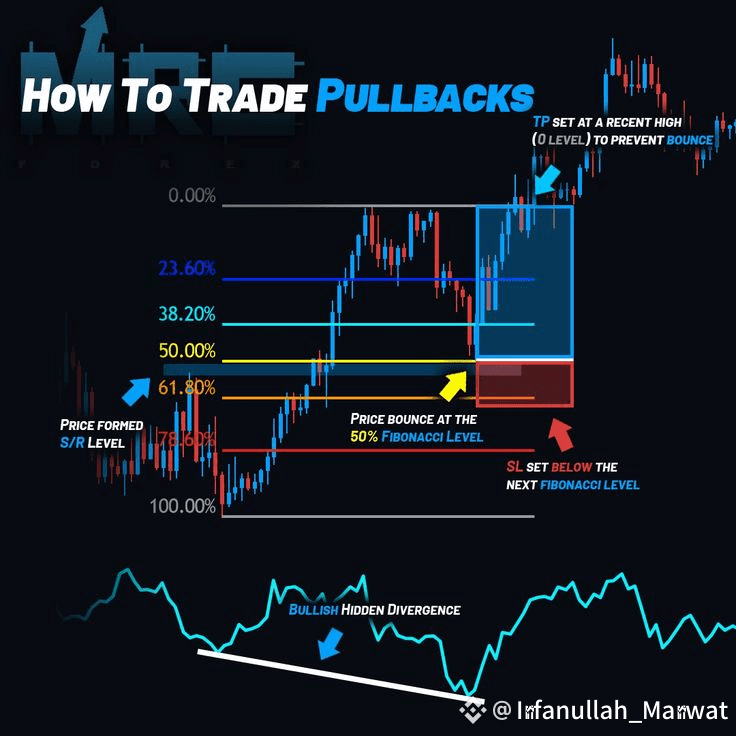
🔍 What is a Pullback?
A pullback is a temporary reversal in the direction of a trend (in this case, a downward move during an uptrend) before the price resumes in the original trend direction.
📈 Chart Breakdown
✅ 1. Price Formed a Support/Resistance (S/R) Level
This is the first key zone where the price reacted in the past.
Traders watch these levels for possible future pullbacks or reversals.
📊 2. Fibonacci Retracement Tool
This tool is drawn from the recent swing low (start of uptrend) to the swing high (end of the trend).
It plots potential pullback zones at key percentages:
23.60%
38.20%
50.0
78.60%
These levels are based on the Fibonacci sequence and are often areas where price bounces or reverses.
🟡 3. Price Bounces at the 50% Fibonacci Level
The price retraced exactly to the 50.00% level, which is a very common reversal point in trending markets.
This is marked with a yellow arrow.
At this point, a buy position can be considered, especially with other confirmations.
🟦 4. TP (Take Profit) Set at 0.00% (Recent High)
This ensures you exit before price potentially pulls back again from resistance.
It’s a safe TP strategy to lock in profits before hitting a double top or major resistance.
🟥 5. SL (Stop Loss) Set Below the Next Fibonacci Level
A stop loss is placed below the 61.8% Fibonacci level.
This provides risk protection if the trade fails.
It ensures that if the price drops too far, you're protected from bigger losses.
🔎 Bullish Hidden Divergence (Confirmation Tool)
At the bottom, we see an RSI or momentum oscillator showing hidden bullish divergence:
Price makes a higher low.
RSI makes a lower low.
This signals that momentum is building up for the uptrend to continue.
It’s a strong entry confirmation when seen at a key Fibonacci level.
✅ Summary of Strategy:
Step Action
1 Identify a strong uptrend.
2 Wait for a pullback.
3 Use Fibonacci tool to find support levels.
4 Look for confluence (Fibonacci + S/R + divergence).
5 Enter trade at key level (like 50%).
6 Place SL below the next Fib level (e.g., below 61.8%).
7 Take Profit at 0% (previous high).
📌 Tips for Success
Combine this with volume or price action patterns for more confirmation.
Avoid trading against the trend unless experienced.
Use risk-reward ratios (e.g., 1:2 or better) to manage your trades
